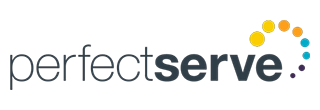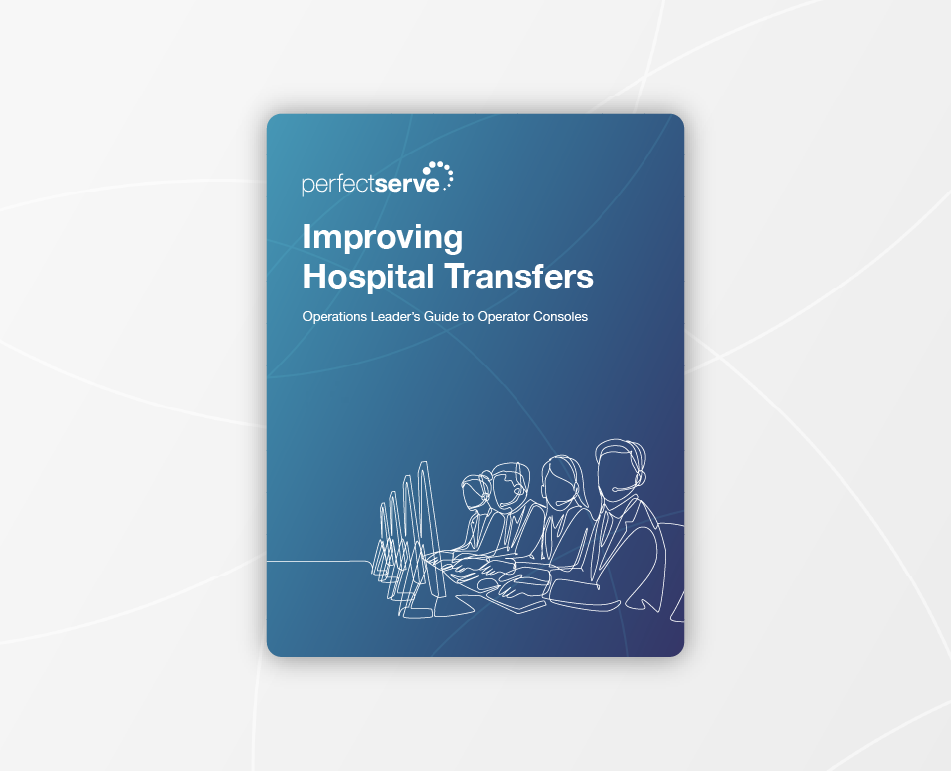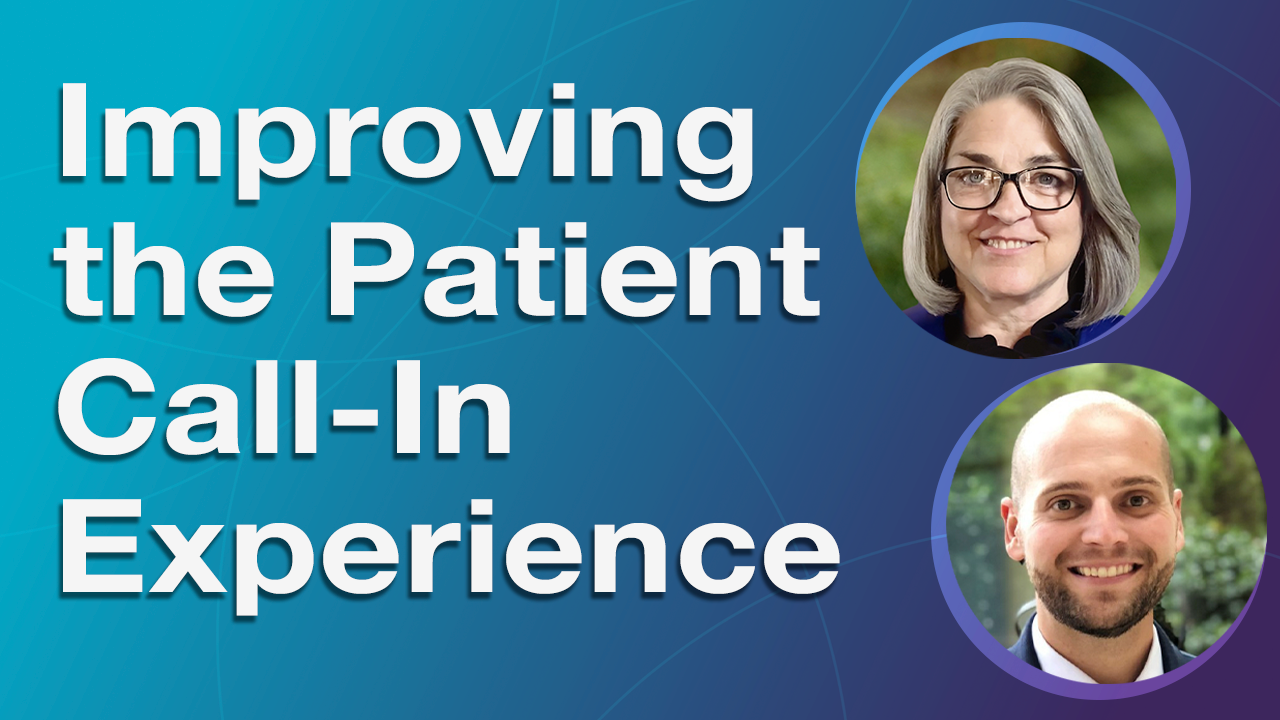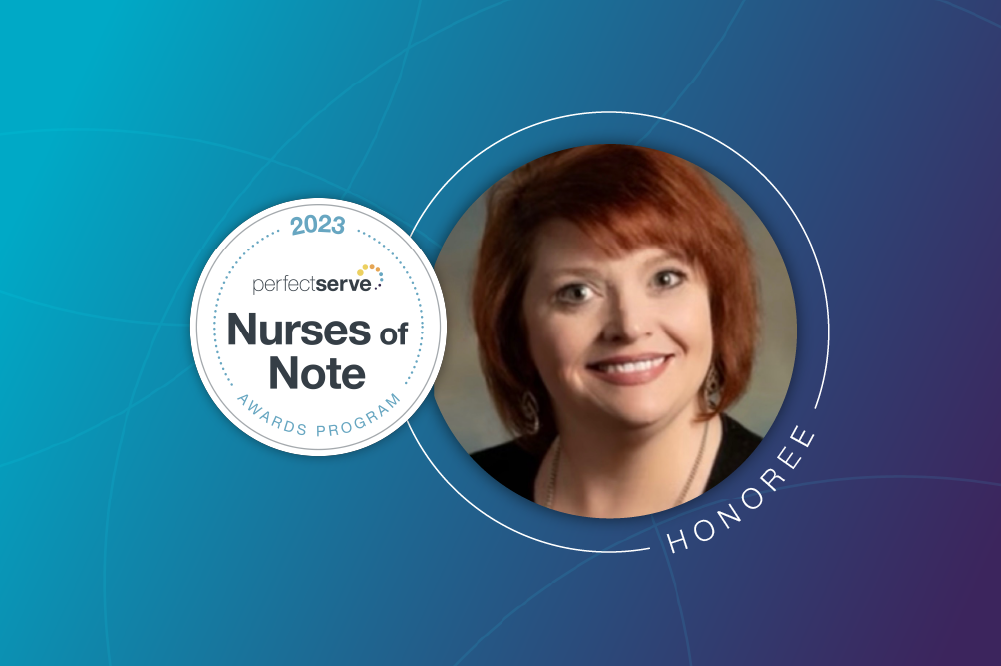How Better Communication Management Ensures Top of License Practice
TABLE OF CONTENTS

How Are You Taking Calls as a Clinician?
Most clinicians get into medicine for a simple reason: they want to help patients. They don’t do it because they enjoy spending hours taking unnecessary calls, managing complex schedules, or doing any number of other administrative tasks. Though these are essential activities in the day-to-day operations of a medical practice, they need to be allocated to the appropriate person to give providers more leeway to work at the top of their license. In addition to expediting health system operations, appropriately directing patient inquiries can be a major satisfier for doctors.
Do you find yourself asking these questions?
- Why did I get pinged for a prescription refill request at 2 AM?
- Who should be managing overnight messages?
- Who should be answering calls that are non-urgent or clinical in nature?
- How can I spend my time on work befitting my training and experience?
With variable expenses eating up operational costs, how can you leverage healthcare communication technology to work for you? Can you save physicians time so they can work at the top of their license?
Practicing at the Top of Your License
What does it mean to practice at the top of your medical license?
Working at the top of your license as a medical professional means you are utilizing your full scope of practice and skills to provide the highest level of care that you are trained and authorized to offer. It involves maximizing your skills, expertise, and knowledge to provide high-quality care to patients, while also working within the limits of your licensure and collaborating with other healthcare professionals as needed.
A provider working at the top of their license is typically based on their skills and market worth among healthcare organizations. For example, a surgeon performing a surgery and a nurse practitioner writing a prescription for a patient in an urgent care setting are both working at the top of their license. A few more examples of what practicing at the top of your license means can be seen below.
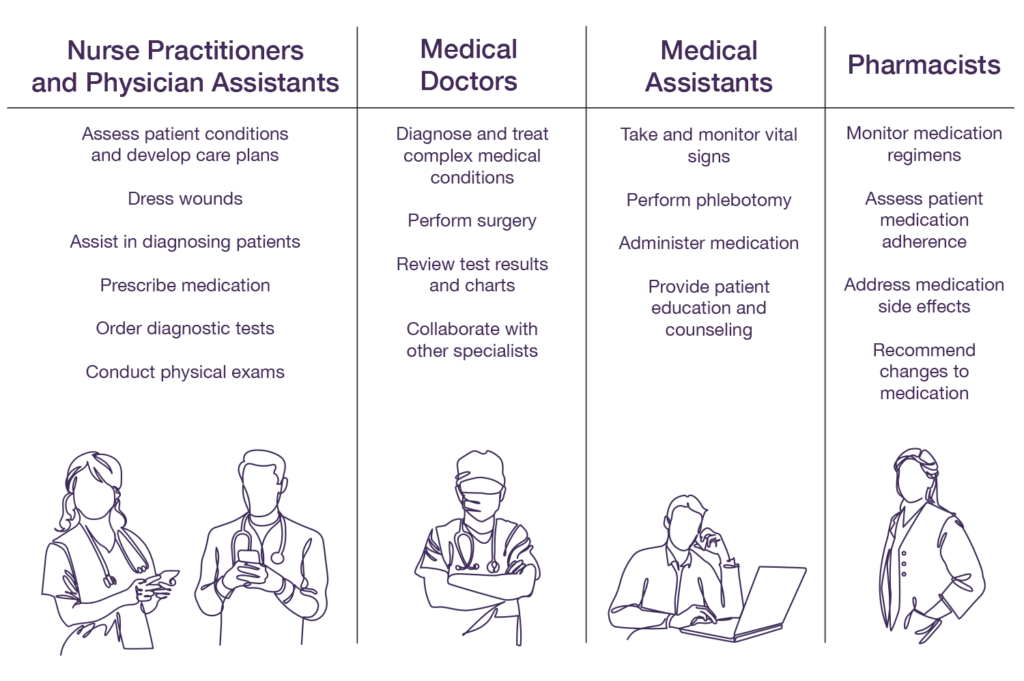
Why does top-of-license practice matter in a health system?
Workload, workflow, and budgets are impacted by how well and how often providers (and all staff) work at the top of their license. If a family medicine clinic is inundated with “standing orders,” who is making sure the prescription refills are signed off? Does the doctor update the order, or does the nurse? Other routine requests could be managed through an automated service, notifying the right person for the task required.
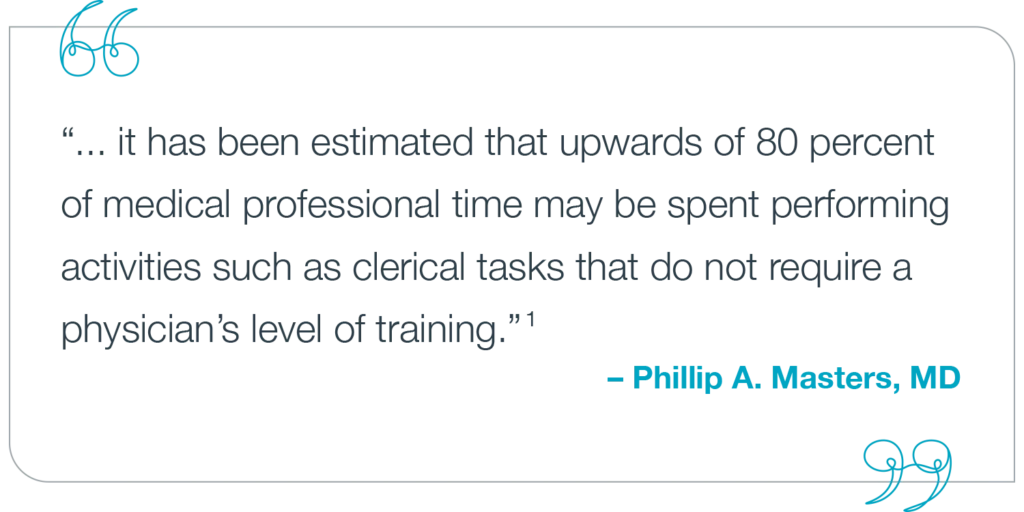
If physicians are doing tasks a medical assistant or nurse can manage, they are not practicing at the top of their license. By focusing on tasks specific to their role, the provider can be compensated accordingly for their treatment. In the same vein, the administrative and nursing staff also work at the top of their license by doing tasks they are better equipped to handle. With this kind of cross-collaborative effort, patients can receive effective and efficient care while the practice gets recognized and reimbursed for their time well spent.
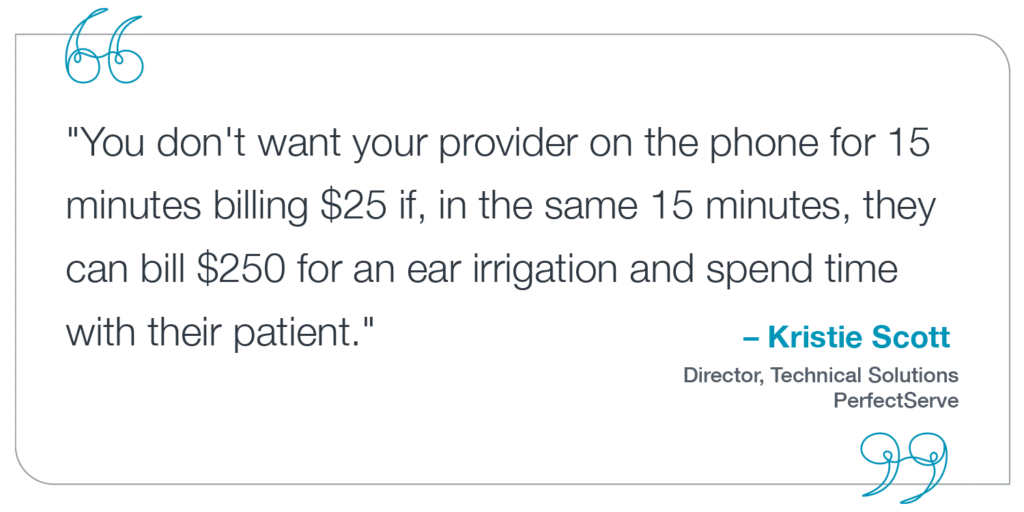
Mastering the Craft of Top-of-License Practice
Practicing top of license doesn’t mean turning medical practices into an assembly line and eliminating the art of medicine. Focusing only on a subset of tasks may help labor costs go down, but the whole patient care experience requires additional time spent listening, communicating, and examining patients. With value-based care, allowing physicians to practice at the top of their license with these freedoms to identify patient concerns, whether in clinic or during hospital rounds, can increase patient outcomes.
“The disadvantage of the assembly line is that unique craftsmanship is lost. From the worker’s point of view, the work becomes repetitive and the “big picture” of the ultimate goal, complete with individual pride in reaching that goal, can be lost.” 2 – Dr. Alan Spiro, MD
Practicing at the top of your license is about focusing your time and talents on activities that will lead to the most positive outcome for both the patient and the provider organization, but it does not mean simply forgetting about tasks that are “beneath you” or unceremoniously foisting them on your team members. Top-of-license practice should lead to better teamwork and more effective patient care. Doctor bedside manner is an example of clinicians mastering their craft beyond procedural tasks.
Directing Communication Appropriately
When communication workflows are built efficiently, clinicians can focus their time on top-of-license activities. Let’s look at how better communication management (messaging, after-hours and on-call routing, etc.) can ensure that providers are able to practice at the top of their license.
A study published in the Journal of General Internal Medicine found that patients who received care from advanced practice nurses (APRNs) had similar health outcomes to those who received care from physicians.3 The study also found that APRNs provided a higher level of preventive care than physicians, including counseling patients on smoking cessation and providing flu vaccines.4 When a physician is needed to consult on a deeper issue, they have final say in a recommendation, treatment, or referral.
For example, if an APRN at an allergy clinic sees a child with a parent, they spend more time in the room talking together and diagnosing the issue. If the nurse is still confused about what rash or type of reaction occurred, they may ask the on-call physician in person (if they’re on site) or send them a secure, HIPAA-compliant message with an image of the rash. The allergist can quickly assess it and provide feedback about a diagnosis. They can proceed with next steps, such as a prescription sent to the pharmacy, and the patients can schedule a follow-up appointment with the front office while the APRN charts or sees another patient.
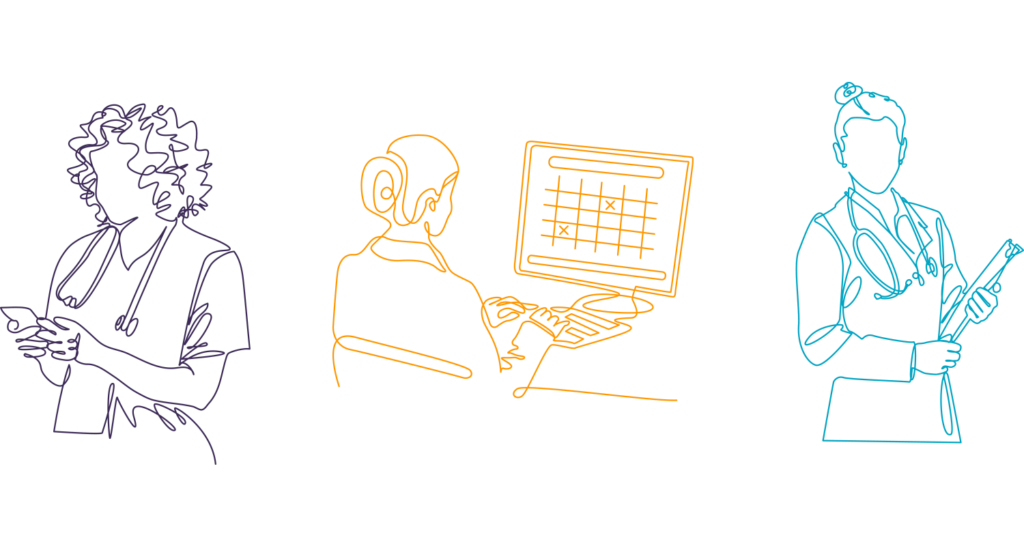
For nurses and doctors, this division of duties protects their time by allowing them to focus on their area of expertise. More time caring for patients means a more balanced workload. Patients receive top-level specialist care, which saves the doctor an extra trip. It may save time for parents or children who also had to take time off work or school to make the appointment.
Answering Service + Provider Scheduling for Top of License Calls
If the practitioner or physician are not available, and the message doesn’t get written down or recorded, what are patients expected to do? Should they call back later? Can the office manager or administrative staff manage the calls?
Save time by using a single system to indicate who is on-call and how and when to contact them. Instead of forcing providers to give out their personal number, patients can follow a guided process so they aren’t left in the dark.
Providers could be built into a schedule to handle specific calls, while the office staff can manage other requests. If you don’t have the staff or current capability, PerfectServe offers a way to track which messages go where. Instead of paper trails, lost notes, and outdated schedules, every person can be on the same page and platform.
Here’s an example of a time-saving schedule with call-routing for providers and patients:
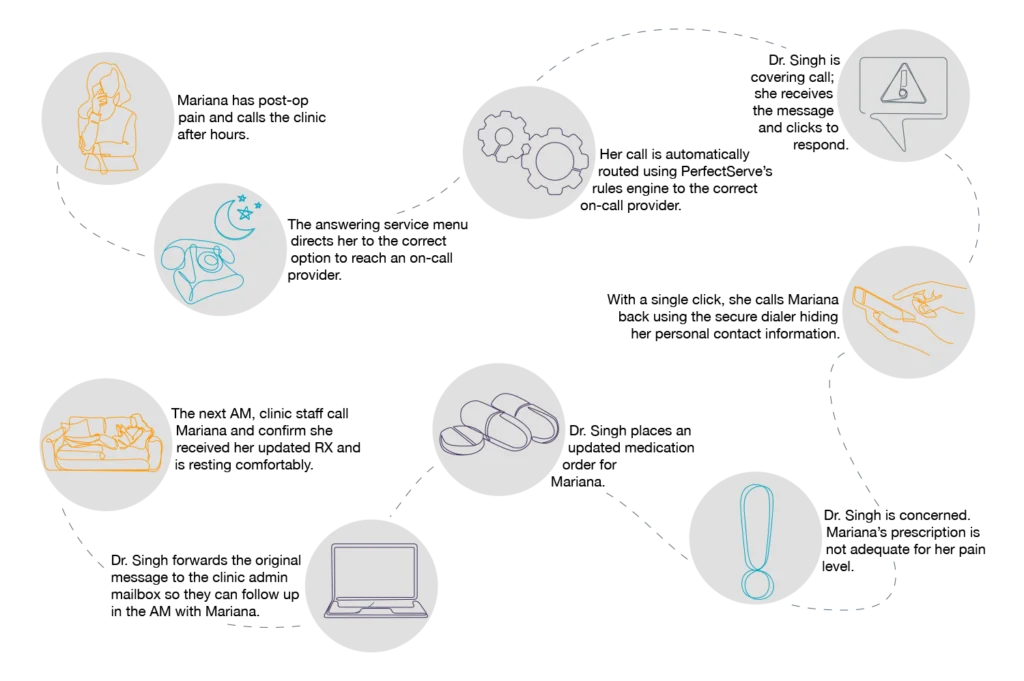
“We can help route calls away from providers and to the appropriate level of care, like to a refill pool, or another selection so providers are only getting calls if they’re the scheduled on-call provider and the call is meant for them.” – Kristie Scott, Director of Technical Solutions

At its core, top-of-license practice is about making sure the right people are focusing on the right tasks based on their role and level of training. Coordinating patient care can be extremely challenging even on the best day, and it only becomes harder as things get busier.
There’s no magic wand to fix healthcare’s “business” problem with the flick of a wrist, but using a structured communication platform to ensure calls and messages get to the right person at the right time is one way of helping doctors and nurses to practice at the top of their license. Getting bogged down in paperwork and other administrative tasks can be a significant source of dissatisfaction for people who spent years training to treat patients, so deploying technology to fill those gaps is a win for all involved.
To learn how PerfectServe can help you better support your providers, contact us today to schedule a demo!
[vc_row][vc_column][button button_url=”https://www.perfectserve.com/request-demo/” button_text=”Schedule a Demo” button_urltarget=”true”][/vc_column][/vc_row]
Sources:
1 Practice at the top of your license: What does that really mean? KevinMD: https://www.kevinmd.com/2019/02/practice-at-the-top-of-your-license-what-does-that-really-mean.html
2 Challenging Paradigms: Practising at the Top of Your License, Health Management: https://healthmanagement.org/c/healthmanagement/issuearticle/challenging-paradigms-practising-at-the-top-of-your-licence
3,4 Chronic inflammatory bowel disease in childhood, National Library of Medicine: https://www.ncbi.nlm.nih.gov/pmc/articles/PMC1495637/
